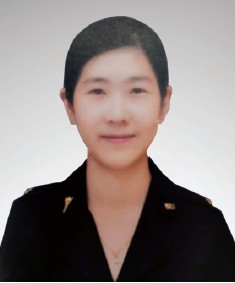Pediatric Radiation Dose from 64 Slices-MDCT in Abdomen after Using the New Pediatric CT Scanning Protocol at Phramongkutklao Hospital
Main Article Content
Abstract
OBJECTIVES: To study the radiation dose in pediatric patients after using a new pediatric computed tomography (CT) scanning protocol at Phramongkutklao Hospital as compared with the historical data and with reference level recommended by International Commission on Radiological Protection (ICRP).
MATERIALS AND METHODS: This study was a prospective and descriptive study. The study target population were all consecutive patients aged <15 year-old who had received a 64-slice computed tomography of the abdomen from January 2015- August 2016 using the new protocol. The control group was patients in the same age group performing CT scan of abdomen in the past before using the new protocol.
RESULTS: Total of 29 children were included in the analysis, 13 were male and 16 were female. The third quartile of the dose-length product (DLP) (75th percentile) was 125.0, 228.0, 305.6 and 381.0 mGy.cm for the patients < 1, 1 to < 5, 5 to < 10 and 10 to <15 year-old respectively. These DLP values were significantly lowered than previously reported in Thailand in almost patient age groups.
CONCLUSION: The radiation dose that our pediatric patients received from undergoing CT scan of abdomen was acceptable after using the new protocol. Data collection in future studies including a higher number of patients and longer follow-up time may be helpful.
Article Details
This is an open access article distributed under the terms of the Creative Commons Attribution Licence, which permits unrestricted use, distribution, and reproduction in any medium, provided the original work is properly cited.
References
2. Brenner DJ, Hall EJ. Computed tomography–an increasing source of radiation exposure. N Engl J Med. 2007;357:2277–84
3. Kleinerman RA. Cancer risks following diagnostic and therapeutic radiation exposure in children. PediatrRadiol. 2006;36 (Suppl. 2):121–5
4. P-L. Khong, H. Ringertz, V. Donoghue, D. Frush, M. Rehani, K. Appelgate et al. Radiological Protection in PaediatricDiagnostic and Interventional Radiology. Annals of the ICRP Publication121. 2013;42(2)
5. Shrimpton PC, Wall BF. Reference doses for paediatric computed tomography. Radiat Prot Dosim. 2000;90:249–52
6. Verdun FR, Gutierrez D, Vader JP, et al. CT radiation dose in children: a survey to establish age-based diagnostic reference levels in Switzerland. EurRadiol. 2008;18:1980–6
7. Kritsaneepaiboon S, Trinavarat P and Visrutaratna P.Survey of pediatric MDCT radiation dose from university hospitals in Thailand.Acta radiologica. 2012; 53: 820-6
8. The ALARA (as low as reasonably achievable) concept in pediatric CT intelligent dose reduction. Multidisciplinary conference organizied by the Society of Pediatric Radiology. August 18-19,2001. PediatrRadiol. 2002 Apr; (4):217-313


